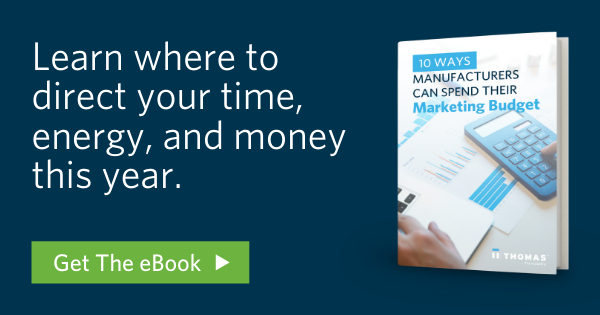How to Innovate Without Blowing Your R&D Budget
Zachary Smith December 4, 2019
In 1998, Steve Jobs told Fortune, “Innovation has nothing to do with how many R&D dollars you have.” Jobs believed that throwing money at a problem should not be the answer. Creativity and genuine genius should win out. And whether you’re a pharmaceutical and software company with a large budget for research and development or a custom manufacturer with considerably less, a budget is still a budget.
So here are a few tips to help you spearhead innovation without blowing your R&D budget.
What Is An R&D Budget?
R&D budget refers to the funds from a business' Research and Experimentation Tax Credit (R&D credit) for companies that incur research and development costs. Its purpose is to reward U.S. companies (software, manufacturing, architecture, engineering, food, food processing and construction, etc.) for increasing their investment, research, and development in applied sciences and technical projects for the current tax year.
Exploratory vs. Exploitative Processes
When brainstorming the next great idea, you have two options. Try to find an idea from somewhere else or work with what you have. Sometimes, working with what we have is hard. After all, why are we innovating if what we have is so great? Let’s go out and find some new ideas! That is the mentality of Exploratory R&D, a potentially costly and unsuccessful process akin to collecting knick knacks and letting them collect dust due to lack of use or proper grooming.
Exploitative R&D involves utilizing the resources and ideas you already have. You know that phrase you mutter at 3am while staring at a stack of papers. “There must be something here. We just have to look at it another way.” It’s something like that. Instead of going to the store for more groceries, you’re going to make something new out of what is already in the fridge. And this works. Companies like Cisco will rotate between the two methods for a variety of reasons. Among them includes leaving no good idea behind, innovation goals that must be met, and budget. A healthy mix of the two are guaranteed to keep your budget in line as well and yield results that would not have come under the exploratory method alone.
Keep Up With Technology
I know it can be hard. But isn’t it more cost effective to utilize technology that already exists instead of trying to reinvent the wheel? I’m not saying copy somebody else’s work — that would be ill advised. I mean utilizing platforms that already exist, or incorporating components that are already available. Do not reinvent the wheel. Use the wheel when you’re building your next mode of transportation.
The R&D credit covers the improvement of your products (think, new and improved versions) including the process of making a product but with cleaner, greener, automated, or efficient methods. Regardless of how large or small your shop is, technologies are driving the industry. For example, automation has been transforming factory floors for years — but it's the strategy of integrating it to advance the entire plant that is innovative.
You Might Also Be Interested In: Top 4 U.S. Manufacturing Challenges And How To Overcome Them
Technology trends can often be predicted by a number of ways, from viewing pending patents to observing early adopters. Often the most successful products are those that are familiar to the user in some shape or form. After all, every new and exciting 3D Printer that comes to market is still just a variation of a 3D Printer. And what are some augmented reality tools besides better ways to see 3D models or machine diagnostic data? Let technology show you the type of innovation you can be making.
Involve Other Employees When Innovating A Product
You know the situation. A goal has been set, and a new product is predicted to bring you more leads. A committee is formed of the same great thinkers that decided the last product launch. And the product before that. And the product before that.
Not changing this dynamic prevents your business from learning more and could be hurting your growth. There's a strategy called "20 percent time" created by Google's founders in 2004 that is still a valid idea. Allow employees to spend 20% of their workweek on a project outside of their normal duties that could help innovate and/or benefit your company. This would allow fresh ideas to pop up from unexpected places, and provide a new look on a problem the usual stagehands may not have thought up on their own.

Or if that is a little too liberal of a policy or unfeasible due to the time employees need to spend on shop floors, then a simple “What do you think about this” would fit the bill. Make sure all your teams are involved — billing and customer service included. The idea here is that instead of spending money trying to find ideas elsewhere, tap into the people you are already paying. You may be surprised by what your staff can come up with if you give them the challenge.
Ask For Customer Feedback
Customer feedback can be difficult to deal with. Nobody wants to hear bad news. But involving your customers and buyers early on may help you avoid sinking your R&D budget into a product that won’t be well received.
Helpful Resource: How To Plan A New Product Launch With Digital Marketing
Focus groups, surveys, polls, and buying trends are all useful information when you’re expecting to launch a new product or service. Asking the source of your revenue for their opinions throughout the development process will be a much less costly endeavor than creating something that they will not purchase or utilize. What a customer values, desires, and looks for in their purchases should be top of mind when on the path of innovation, so make sure you know what your buyers are looking for — click here for a copy of the latest products and services being sourced.
Reducing costs is no easy task, and these suggestions require a different frame of thinking than one may be used to. I know you also can’t eradicate a budget, nor do I suggest that you do. Despite Steve Job’s philosophy, you need to spend money to make money. The good news is that the Research and Development Tax Credit has now become a permanent tax credit available to manufacturers, and small and mid sized businesses are claiming the credit more often — so don’t let a budget stop you from changing the world.
Learn More: Focus On R&D Drives Demand For Laboratory Equipment Supplies
Did you find this useful?





![How To Meet The Needs Of B2B & Industrial Buyers [Updated 2022]](https://blog.thomasnet.com/hubfs/Brainstorm%20meeting%20understanding%20B2B%20buyers.png)




